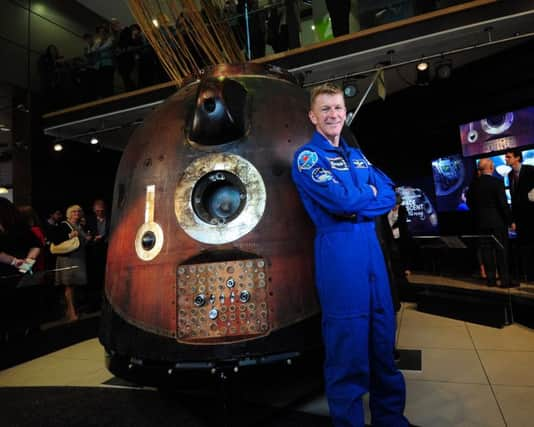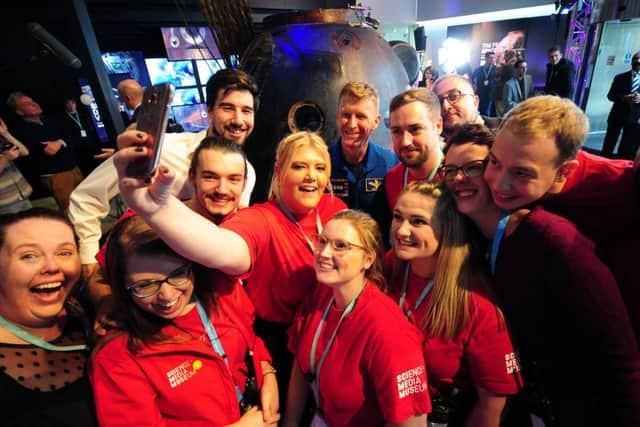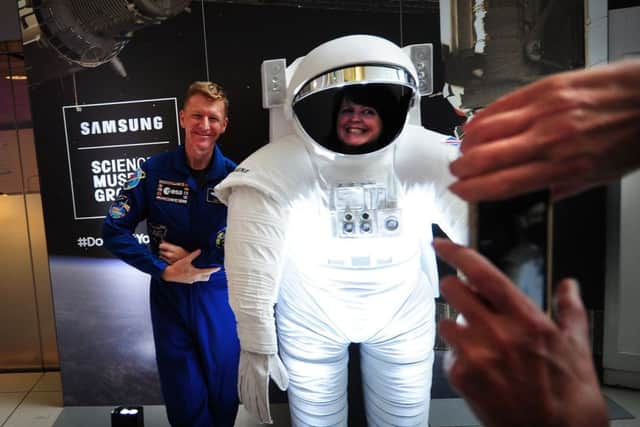Tim Peake and his landing craft come down to earth in Bradford


The Soyuz TMA-19M descent module had landed in the foyer of the National Science and Media Museum in Bradford. Attached to it and draped across the ceiling was the parachute that had slowed its return to earth.
When Tim Peake had last seen it, other than on display at the Science Museum in London, it was belching smoke and was sitting atop the earth it had just scorched.
Advertisement
Hide AdAdvertisement
Hide AdThe capsule is now at the beginning of a two-year tour of Britain, at the expense of the electronics company, Samsung, and Bradford is its first stop. It goes on public view today and remains there until November 19.


“It looks better here than it did in London,” noted Ian Blatchford, director of the Science Museum Group, which had organised yesterday’s preview.
The capsule had come with Mr Peake in tow, for one day only, and he said he could still but marvel at what he called the “engineering miracle” that had been his “lifeboat”during his 186-day expedition.
“It’s very, very cramped when it has three people inside,” he said.
Advertisement
Hide AdAdvertisement
Hide Ad“Fortunately, you don’t have to spend that long in it It only takes six hours to get to the International Space Station now. That’s not too long to be cramped up.


“But I’m extremely fond of it. It kept me alive in space and through the punishing re-entry through the earth’s atmosphere.”
Once at the head of a 300-tonne rocket, the capsule has now been acquired for the nation by the Science Museum Group. Yesterday, Mr Peake fielded questions about it from 30 pupils of Bradford’s Forster Academy. His journey, he suggested, was just the beginning. “We have quite a clear road map now as to how we’re going to get to Mars,” he said.